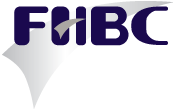
In South Africa’s diverse and often challenging business landscape — from the agricultural enterprises of the Winelands to the robust manufacturing hubs — cash flow is the true barometer of business health. Strong sales and healthy paper profits are encouraging, but it’s your available cash — what’s actually in the bank — that determines your ability to meet obligations, seize opportunities, and ensure long-term stability.
As accountants, we can confirm that poor cash flow management, even in profitable ventures, is one of the biggest causes of business distress. The following tested, practical strategies can help strengthen your business’s financial resilience.
Section 1: The core principles of working capital management
Think of working capital as the financial heartbeat of your business — how quickly money moves in and out. Effective cash management is all about disciplined working capital management — carefully handling the difference between current assets and current liabilities.
- Prioritise liquidity over paper profit: Business owners must distinguish between three key financial terms: Revenue (money earned), profit (revenue less costs), and cash (funds available in your account). A business can be profitable on paper but still struggle with liquidity if customers delay payments.
- Actionable advice: Monitor your net working capital (current assets – current liabilities) regularly. If you find yourself in a negative position, treat it as an early warning sign. Take quick action to speed up inflows or slow down outflows.
- Optimise the cash conversion cycle: Your cash conversion cycle measures how long it takes (in days) to turn your spending on stock and materials back into cash from customers. The shorter the cycle, the healthier your cash flow.
- Formula focus: Strategically aim to reduce your days sales outstanding (DSO) and days inventory outstanding (DIO) while managing — without straining — your days payable outstanding (DPO).
- Inventory as a cash drain: For businesses dealing with physical goods, inventory represents cash sitting idle. Excess stock ties up working capital that could otherwise be used for investment or paying down debt.
- Actionable advice: Adopt a lean inventory philosophy. Use accurate forecasting and stock management systems to align inventory with real demand. Use tools that automatically adjust re-order levels as sales change — keeping your cash free from slow-moving or obsolete stock.
Section 2: Practical Strategies for Cash Acceleration and Protection
Section 1 covered the fundamentals — now let’s focus on how to actively improve and protect your cash position day-to-day.
- Accelerated accounts receivable management: Improving your collection process is the fastest way to boost immediate cash flow.
- Actionable advice:
- Set clear payment terms: State firm terms (e.g., 7 or 15 days) on all invoices.
- Automate reminders: Use your accounting system to send professional, staggered reminders before and on the due date.
- Reward prompt payment: Offer small early-settlement discounts (e.g., 1–2% for payment within 7 days). Often, the cost of the discount is far less than the financing cost of chasing overdue payments.
- Actionable advice:
- Strategic accounts payable management: Managing cash outflows carefully helps preserve liquidity — without damaging supplier relationships or incurring penalties.
- Actionable advice: Negotiate the longest reasonable payment terms with key suppliers and pay on the due date — not earlier. This approach maximises cash availability while maintaining supplier trust.
- Insulate against volatility: The cash reserve – South Africa’s economy and seasons can be unpredictable — especially in sectors like agriculture and tourism — so a cash buffer is essential.
- Actionable advice: Build a cash reserve by setting up a separate, non-operating bank account to hold funds equal to three to six months of fixed operating costs (such as rent, utilities, and salaries). This safety net cushions your business during downturns and provides liquidity to seize new opportunities.
- Ring-fence statutory payments (SARS compliance): A core rule for any South African business: never treat money owed to SARS as available working capital.
- Actionable advice: Open a dedicated Tax and overheads account. When invoicing or receiving payments, immediately transfer the relevant percentages for VAT, PAYE, and Provisional Tax into this account. Keeping these funds separate ensures you’re always ready for submission deadlines — and prevents costly penalties or interest from SARS, which can severely impact cash flow.
The advantage of real-time cloud accounting
Having strong cash flow principles and disciplined daily management is essential — but to apply them effectively, you need real-time insight. Modern cloud accounting provides that clarity, replacing guesswork with certainty.
Cloud accounting platforms such as Xero are no longer just compliance tools — they’re essential instruments for controlling cash flow. By connecting directly to South African bank accounts through automated feeds, these systems provide real-time visibility of every transaction. This eliminates manual data entry, reduces errors, and ensures you’re always working with current information instead of outdated bank statements.
Short-term cash flow forecasts generated from live receivables and payables serve as an invaluable early warning system — helping identify potential shortfalls before they become crises. Additionally, analytics tools like Syft Analytics integrate seamlessly with Xero to turn raw accounting data into clear, visual dashboards. You can quickly drill down into key performance indicators, model future scenarios, and share reports that make complex financial insights easy to understand.
Together, these technologies strengthen your liquidity resilience and empower you to make confident, data-driven decisions about your business’s future.
Your next step
Mastering your cash flow is an ongoing journey, not a one-time fix. By applying these principles and strategies, you’ll strengthen not only your business’s liquidity but also your confidence in managing sustainable growth.
We encourage you to take the next step by connecting with your dedicated FHBC partner or team member. They’re ready to help you put these strategies into action — integrating modern cloud tools like Xero and Syft Analytics into your operations, and tailoring a robust, data-driven cash flow plan that fits your business’s unique circumstances.
With expert guidance and the right technology, you can transform your cash flow management from reactive to proactive — building a stronger, more resilient financial future for your business.
Source Reference:
- Companies Act, 71 of 2008 (as amended). Republic of South Africa: Solvency and Liquidity Test requirements for Companies.
- South African Institute of Professional Accountants (SAIPA). Professional Best Practice Guidelines for Working Capital Management (General Accounting Principles).
- South African Revenue Service. Compliance Guidelines for Value-Added Tax and Pay-As-You-Earn submissions and payment deadlines.
- Xero (Pty) Ltd. Public-facing documentation and client success stories regarding real-time cash flow forecasting and debtor automation tools.
- Syft Analytics (Pty) Ltd. Public-facing documentation on integration capabilities and reporting features.

